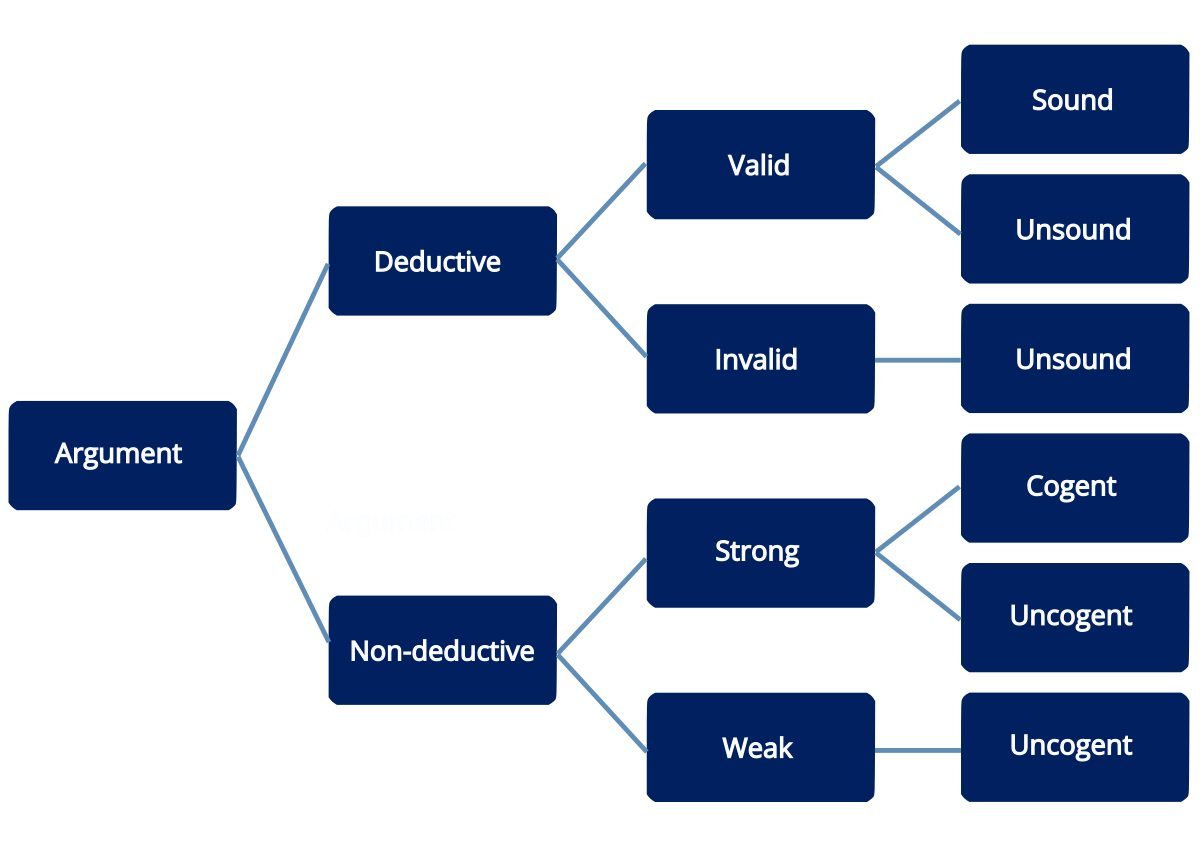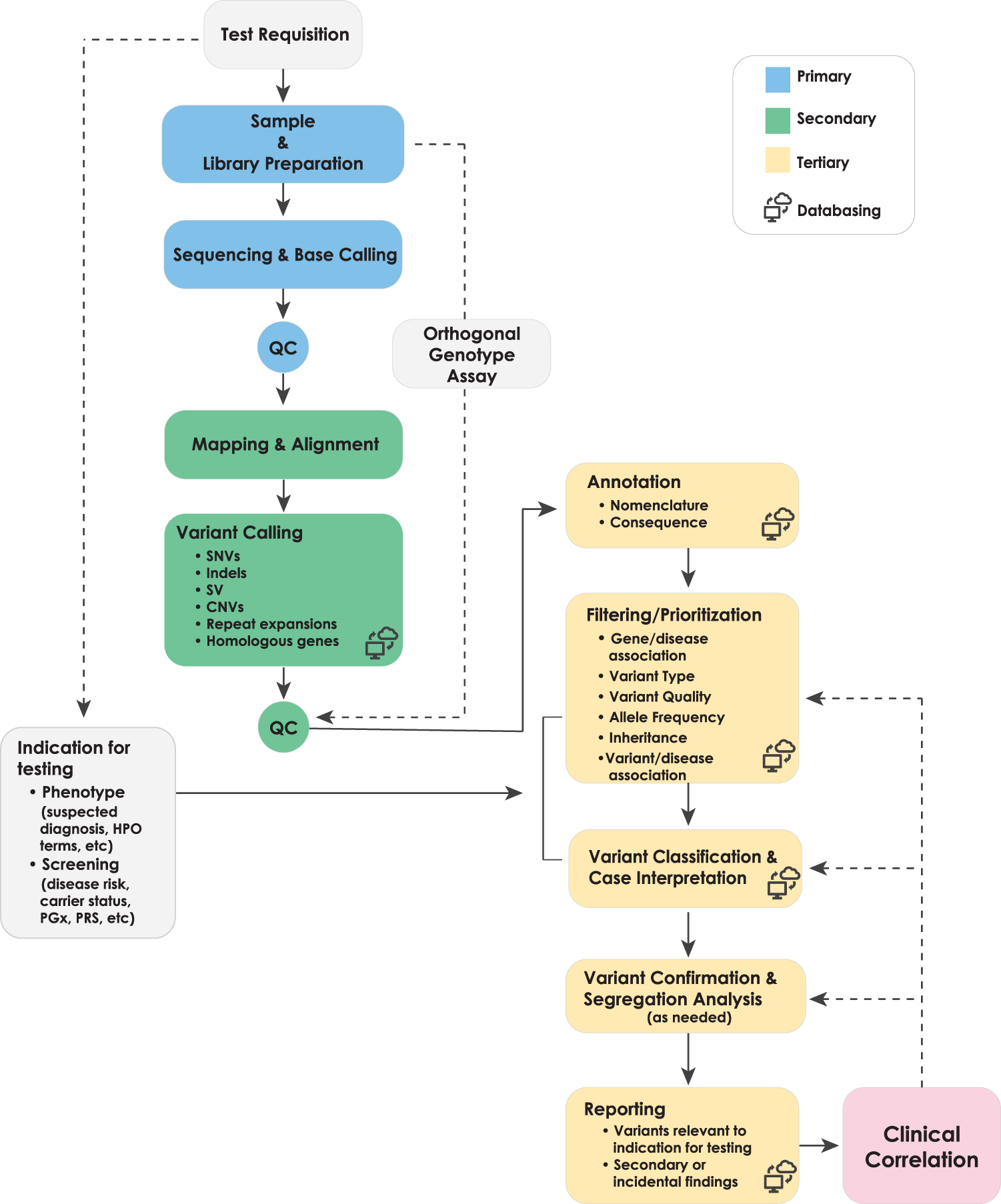Type Of Expression Is Ambiguous Without More Context
Ambiguity is a common phenomenon in language, often causing confusion and misinterpretation. It occurs when a word, phrase, or sentence has more than one possible meaning. The lack of clarity in an ambiguous expression can lead to misunderstandings and even humorous misunderstandings in some cases. In the English language, there are various types of ambiguity, each arising from different sources and causing different levels of confusion. In this article, we will explore these different types of ambiguity and provide examples to help understand them better.
Ambiguity in Language: Exploring Various Types
1. Lexical Ambiguity: Ambiguity Arising from Multiple Word Meanings
Lexical ambiguity occurs when a word has multiple meanings, and it is unclear which meaning is intended in a particular context. For example, the word “bank” can refer to a financial institution or the side of a river. Without further context, a sentence like “I went to the bank” could be interpreted in either sense, leading to confusion.
2. Structural Ambiguity: Ambiguity Arising from Sentence Structure
Structural ambiguity arises when the structure of a sentence allows for multiple interpretations. This often occurs due to the placement of words or phrases in a sentence. For instance, consider the sentence “The man saw the woman with a telescope.” Here, it is unclear whether the man or the woman is holding the telescope.
3. Syntactic Ambiguity: Ambiguity Arising from Sentence Function and Interpretation
Syntactic ambiguity occurs when the function or interpretation of a sentence is unclear due to its syntax. This type of ambiguity is closely related to structural ambiguity but focuses on the function of the sentence rather than its structure. An example of syntactic ambiguity is the sentence “I saw the man with binoculars.” Here, it is ambiguous whether the man or the speaker is using the binoculars.
4. Semantic Ambiguity: Ambiguity Arising from Multiple Interpretations of Word/Phrase Meaning
Semantic ambiguity arises when a word or phrase has multiple possible interpretations based on its meaning. This can occur due to homonyms (words that sound the same but have different meanings) or polysemous words (words with multiple related meanings). For instance, the phrase “I left my bank card at the bank” can be interpreted as either leaving the card at the financial institution or at the side of the river.
5. Pragmatic Ambiguity: Ambiguity Arising from Context and Speaker’s Intent
Pragmatic ambiguity occurs when the intended meaning of an expression is unclear without considering the context or the speaker’s intent. It relies heavily on the shared knowledge and assumptions between the speaker and the listener. An example of pragmatic ambiguity is the phrase “It’s getting hot in here” which could either mean that the temperature is rising or that someone is becoming angry.
FAQs:
Q: What is the main problem with ambiguous expressions?
A: Ambiguous expressions can lead to confusion and misinterpretation in communication. They can cause misunderstandings and make it difficult for the listener or reader to understand the intended meaning.
Q: Why do ambiguous expressions exist in languages?
A: Ambiguity can arise in languages due to the inherent complexity of communication. Words and sentences can have multiple possible meanings, and distinguishing between them often requires additional context or clarification.
Q: Are there any benefits to using ambiguous expressions?
A: While ambiguity can lead to confusion, it can also be used intentionally for literary purposes or to create humor. Ambiguous expressions can add depth and complexity to language, allowing for creative interpretations and multiple layers of meaning.
Q: How can one avoid ambiguous expressions?
A: To avoid ambiguity, it is essential to provide sufficient context, clarify intentions, and carefully consider the structure and meaning of words and sentences. Using precise and unambiguous language can help ensure clear communication.
Q: Can ambiguity be completely eliminated from language?
A: It is virtually impossible to eliminate all forms of ambiguity from language. However, by being mindful of potential ambiguities and providing additional context, we can minimize confusion and increase clarity in communication.
In conclusion, ambiguity is a prevalent aspect of language that can lead to misunderstandings and confusion. The various types of ambiguity, including lexical, structural, syntactic, semantic, and pragmatic ambiguity, each contribute to the complexity of language interpretation. By understanding these different types of ambiguity and being mindful of their implications, we can strive for clearer and more effective communication.
Ios : Swift 3.0: Type Of Expression Is Ambiguous Without More Context?
Keywords searched by users: type of expression is ambiguous without more context Swift dispatchqueue main async type of expression is ambiguous without more context, Type of expression is ambiguous without more context rxwebkit, Type of expression is ambiguous without more context rxswift, Alamofire, Initializer for conditional binding must have Optional type, not ‘String, Escaping Swift
Categories: Top 98 Type Of Expression Is Ambiguous Without More Context
See more here: nhanvietluanvan.com
Swift Dispatchqueue Main Async Type Of Expression Is Ambiguous Without More Context
In Swift programming, dispatch queues are a powerful tool used for managing concurrent tasks. They provide a way to perform work asynchronously, allowing for the responsiveness and smooth user experience in applications. However, in some cases, when using the `main.async` expression with dispatch queues, an ambiguity may arise due to lack of context.
The `main.async` expression is particularly used to dispatch tasks to the main queue, which is the queue responsible for updating the user interface. This is crucial for ensuring that time-consuming tasks are performed in the background, while UI updates occur on the main thread to avoid freezing or unresponsiveness of the interface.
However, the ambiguity arises when using the `main.async` expression without specifying the intended context or purpose. This can lead to confusion, errors, or unexpected behavior in the code execution. Without sufficient information, the compiler cannot determine the desired operation and may produce an error stating that the type of expression is ambiguous.
To resolve this ambiguity, it is essential to provide additional context or consider the specific situation at hand. Depending on the scenario, there are a few common scenarios that can cause this ambiguity:
1. Multiple Dispatch Queues:
If there are multiple dispatch queues being used within the codebase, it is crucial to explicitly mention the intended queue for the `main.async` expression. This ensures that the task is dispatched to the correct queue, avoiding ambiguity. By specifying the target queue, developers can convey their intentions accurately and allow for smooth code execution.
2. Inconsistent Context:
Another reason for ambiguity is using the `main.async` expression in a particular context that does not align with the requirements of that code block. For example, if the code inside a closure is used in a non-UI related task, but `main.async` is still applied, an ambiguity can arise. In such cases, it is vital to review the code and revise the usage of `main.async` to match the context appropriately.
3. Incorrect Syntax:
Typographical errors or incorrect syntax can also result in ambiguity with the `main.async` expression. Small mistakes, such as missing parentheses or a wrong method name, can cause the compiler to be unable to identify the intended expression. Double-checking the syntax and ensuring that the correct method names and parameter formats are used is crucial to avoiding this ambiguity.
To further clarify the concept of the `main.async` expression and address commonly asked questions, we have compiled a list of FAQs:
FAQs:
Q1. What does the `main.async` expression do?
A1. The `main.async` expression dispatches a task or block of code to the main queue for execution. It ensures that the UI updates occur on the main thread, avoiding freezing or unresponsiveness.
Q2. Why is the type of expression ambiguous without more context?
A2. The ambiguity arises because the compiler cannot determine the intended purpose or context of the `main.async` expression. It requires additional information to accurately identify the desired operation.
Q3. How can I resolve the ambiguity with `main.async`?
A3. To resolve ambiguity, provide more context or specify the intended dispatch queue explicitly. This allows the compiler to identify the correct operation.
Q4. Are there any common mistakes that lead to ambiguity with `main.async`?
A4. Yes, common mistakes include not specifying the dispatch queue, using `main.async` in non-UI related tasks, and syntax errors.
Q5. Is it necessary to always use `main.async` when updating the UI?
A5. Yes, it is generally necessary to use `main.async` when updating the UI from a background or non-main queue. This ensures that UI updates occur on the main thread to avoid issues with responsiveness.
In conclusion, the `main.async` expression is a powerful tool in Swift programming that allows for executing tasks on the main queue asynchronously. However, it can become ambiguous without enough context, leading to potential errors or unexpected behavior. By providing additional information, specifying the dispatch queue, and using correct syntax, developers can avoid ambiguity and make their code execution more reliable and predictable.
Type Of Expression Is Ambiguous Without More Context Rxwebkit
Expression is a fundamental component of human communication. Whether through spoken words, body language, or written text, expressions convey meaning, emotions, and ideas. However, sometimes the intended message can be unclear or open to interpretation, especially when lacking context. This holds true for the term “rxwebkit,” a type of expression that can be ambiguous without more information.
RxWebKit is actually a combination of two different terms: “Rx” and “WebKit.” To fully understand its meaning, let’s break down these two components. “Rx” is an abbreviation for “reactive extensions,” a programming paradigm that allows developers to write asynchronous and event-based applications using observable sequences. On the other hand, “WebKit” refers to an open-source web browser engine primarily used in Apple’s Safari browser.
When combined, “rxwebkit” could refer to multiple things depending on the context. Here are a few possible interpretations:
1. RxWebKit as a framework: One possible meaning of “rxwebkit” is that it represents a software framework or library that combines reactive extensions with the WebKit browser engine. This framework would provide developers with a seamless environment for building reactive web applications that utilize the capabilities of WebKit.
2. RxWebKit as a project or initiative: Another interpretation is that “rxwebkit” represents a specific project or initiative aimed at integrating reactive extensions into the WebKit browser engine. This could involve developing custom tools, APIs, or even modifications to the underlying WebKit codebase to enable reactive programming paradigms.
3. RxWebKit as a descriptive term: In some cases, “rxwebkit” may simply refer to web content or applications that utilize both reactive extensions and the WebKit engine. It could be used as a descriptive term to highlight the combination of these two technologies, without referring to a specific framework or initiative.
It is important to note that without additional context, it becomes challenging to pinpoint the precise meaning of “rxwebkit.” The ambiguity arises due to the potential versatility of its interpretation, and a more specific context is crucial in accurately understanding the intended message. Therefore, it is advisable to seek further explanation or clarification when encountering this term.
FAQs:
Q: Is RxWebKit a widely recognized term in the programming community?
A: While “RxWebKit” might be used within certain programming circles, it is not a well-established or widely recognized term in the broader programming community. Its usage is context-dependent and may vary among different development teams or organizations.
Q: Are there any existing frameworks or projects related to RxWebKit?
A: As of now, there don’t appear to be any widely known or established frameworks or projects specifically named “RxWebKit.” However, it is worth noting that the combination of reactive extensions and the WebKit engine is certainly an area of interest and exploration within the programming community.
Q: Can you provide examples of applications or use cases where RxWebKit might be relevant?
A: Certainly! If we consider that RxWebKit refers to the combination of reactive extensions and the WebKit engine, potential use cases could include building dynamic web applications with real-time updates, creating interactive user interfaces with event-based interactions, or developing data visualization tools that rely on reactive data streams generated from web content.
Q: How can I gain more clarity when encountering the term “rxwebkit”?
A: When confronted with the term “rxwebkit” in a specific context, it is best to seek clarification from the source providing the expression. Asking for additional details, explanations, or examples related to “rxwebkit” will help ensure that the true intended meaning is understood.
Q: Can “rxwebkit” imply other meanings beyond the ones mentioned?
A: Yes, beyond the interpretations listed in this article, “rxwebkit” could potentially have other meanings depending on the specific context in which it is used. It could be a product name, an internal project code, or have significance within a particular programming community or organization. Understanding its meaning requires referential information from the context in which it is used.
Type Of Expression Is Ambiguous Without More Context Rxswift
RxSwift is a popular reactive programming framework for Swift, which allows developers to easily transform asynchronous events into a stream of values. It provides a powerful and elegant way to handle events and data flow in a reactive manner. However, the term “type of expression is ambiguous without more context” is commonly encountered by developers when working with RxSwift. In this article, we will explore what this error means, why it occurs, and how to resolve it.
What does “type of expression is ambiguous without more context” mean?
In Swift, the compiler relies on strong type inference to infer the type of expressions and variables. However, there are cases where the compiler cannot determine the type unambiguously, resulting in the “type of expression is ambiguous without more context” error.
Why does this error occur in RxSwift?
The error “type of expression is ambiguous without more context” is commonly encountered when working with RxSwift due to the complex nature of its reactive programming paradigm. RxSwift relies heavily on generic types to represent different kinds of events and data streams. The error usually occurs when there is a lack of type information or incorrect usage of generics.
How to resolve the “type of expression is ambiguous without more context” error?
1. Explicitly specify the types: One way to resolve this error is to explicitly specify the types involved in the expression. By providing explicit type annotations, you remove any ambiguity and help the compiler understand the context correctly. For example, instead of writing `Observable.just(“Hello, World”)`, you can explicitly specify the type as `Observable
2. Provide more context: In some cases, providing more context to the compiler can resolve the ambiguity. For example, if you are dealing with multiple observables of different types, you can use operators like `merge` or `zip` to combine them, which provides more context to the compiler for type inference.
3. Check for missing imports: The “type of expression is ambiguous without more context” error can also occur if you forget to import the necessary RxSwift modules. Ensure that you have imported RxSwift and its associated modules correctly in your project.
4. Review type constraints: Check if you have implemented any custom operators or extensions that might be causing the ambiguity. Review the type constraints used in those implementations and make sure they are correct and not conflicting with other parts of your codebase.
5. Break down complex expressions: If you encounter this error in a complex expression, try breaking it down into smaller, more manageable parts. This can help you identify the specific part of the expression that is causing the ambiguity and resolve it.
FAQs:
Q: I’m getting the “type of expression is ambiguous without more context” error in my project. What should I do?
A: First, try to understand the context in which the error occurs. Analyze the code that triggers the error and check for any missing type information or incorrect usage of generics. Then, try implementing the resolution steps mentioned above, such as explicitly specifying types or providing more context to the compiler.
Q: Can I ignore the “type of expression is ambiguous without more context” error?
A: It is generally not recommended to ignore this error because it indicates an issue with your code that might lead to unexpected behavior or runtime crashes. It’s better to resolve the error by providing the necessary type information or context.
Q: Are there any common scenarios where this error occurs?
A: This error often occurs when dealing with observables, operators, or generic types in RxSwift. It can happen when you forget to import RxSwift modules, incorrectly define type constraints, or have complex expressions with ambiguous types.
Q: How can I prevent this error from occurring?
A: To prevent this error, it’s important to follow good coding practices, such as providing explicit type annotations where necessary and ensuring the correct usage of generics. Additionally, regularly reviewing and refactoring your codebase can help in early identification and resolution of potential type-related issues.
In conclusion, the “type of expression is ambiguous without more context” error is a common challenge faced by developers working with RxSwift. By following the resolution steps mentioned above and being mindful of type information and generics, you can effectively resolve this error and ensure smooth and error-free reactive programming with RxSwift.
Images related to the topic type of expression is ambiguous without more context

Found 38 images related to type of expression is ambiguous without more context theme















Article link: type of expression is ambiguous without more context.
Learn more about the topic type of expression is ambiguous without more context.
- Type of expression is ambiguous without more context Swift
- Type of expression is ambiguous without more context
- Compiler says expression is ambiguous in call to …
- Async block compiler error “Type of expression is ambiguous …
- Type of expression is ambiguous without more context
- Amplify.Auth.signUp helper shows Type of expression is …
- SOLVED: Hacking with macOS, project5, type of expression is …
See more: nhanvietluanvan.com/luat-hoc